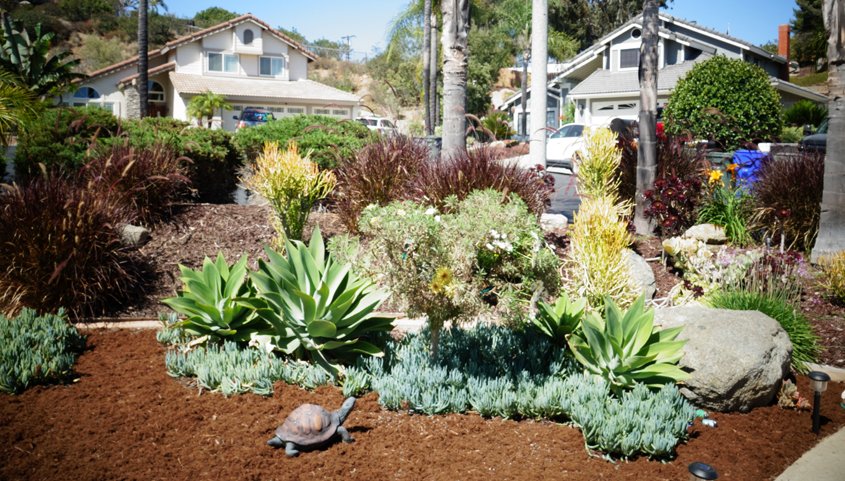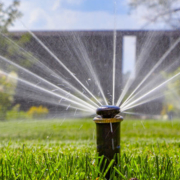Irrigate Your WaterSmart Landscape Like a Pro
Irrigation is an essential part of any good landscape design. It ensures plants and trees get the water they need to thrive without wasting a drop. Once you know how much water your landscape plants require, it’s time to take a closer look at your irrigation system.
Whether you are working with a professional designer or are doing the project yourself, the following checklist will help you keep track of the main design decisions involved in irrigation design.
Start with this informational video about WaterSmart Living Landscape irrigation
Evaluate your existing irrigation system and determine if it can be maintained in its current condition or if you need to upgrade it. Some irrigation systems can be upgraded by changing nozzles, converting to drip emitters, or adding a smart controller, while others may need to be completely redesigned.
Irrigation options fall into categories
High-efficiency irrigation is the most efficient method to deliver water to plants is low-flow irrigation. It delivers water from the valve through a filter and then through a network of lateral pipes and sometimes flexible tubing, to the individual emission devices such as drip emitters, in-line drip emitters, or bubblers. Pressure compensating devices are always the most efficient option.
Low flow irrigation is a good choice for trees and shrub areas and should be used in any landscaped areas next to hardscape and in areas less than eight feet wide to prevent runoff from overspray. When using drip emitters, reduce maintenance and ensure long-term durability by selecting good quality tubing and designing for at least two emitters per shrub.
Moderate efficiency irrigation is the next most efficient types of irrigation include rotating or low precipitation (typically for spaces eight to 30 feet in size). These nozzles are a better choice than conventional spray heads for watering turf because they have a lower application rate – they water slowly. Your watering times will increase, but these sprinklers do not produce mist, and they apply water at a rate turf can absorb it, reducing runoff.
Low-efficiency irrigation. The least efficient types of automatic irrigation include conventional spray irrigation and impact rotors. These types of high precipitation irrigation distribution systems generally apply water faster than the soil can absorb. Installing a new system with low-efficiency irrigation is not recommended. If you have an existing conventional spray system, you can easily retrofit it with new low precipitation nozzles.
Get smart with a smart controller

This new landscape includes a drip-irrigation system, rotating nozzles, and a smart irrigation controller to schedule efficient water use. Photo: Otay Water District
Upgrade to a smart controller, an automatic controller (also called a timer or clock) is either weather-based or has historical weather data included as a reference. Some systems allow for adding a weather sensor or moisture detection system that automatically adjusts your watering schedule in response to current weather or soil moisture level.
Smart controllers can turn off your sprinklers when it rains and increase the frequency and/or duration of watering in hotter weather. Locate the controller in a place that is easy for you to access, such as the garage.
Verify your new landscape water use
WaterSmart landscape irrigation aims to apply water as efficiently as possible. This means using low flow drip or bubblers whenever possible and in areas with overhead sprays, providing the correct pressure and equipment layout to ensure even coverage to maximize efficiency.
Once you have determined what type of irrigation you would like to use, divide your yard into zones and note what kind of irrigation you plan to use in each zone. Contact some of the major irrigation manufacturers to obtain an irrigation design guide to help you with the specifics of your irrigation layout. Some irrigation manufacturers even offer free irrigation design services.
It is important to double-check to make sure your design meets the target landscape water use after installation. You may need to adjust the design to meet your target to maximize water savings.
__________________________________________________

(Editor’s Note: The San Diego County Water Authority and its 24 member agencies offer programs, resources, and incentives to improve water-use efficiency for residential, commercial, and agricultural users. WaterSmart choices are a way of life in the region. Stay WaterSmart San Diego! For more water-use efficiency resources, go to WaterSmart.SD.org.)



